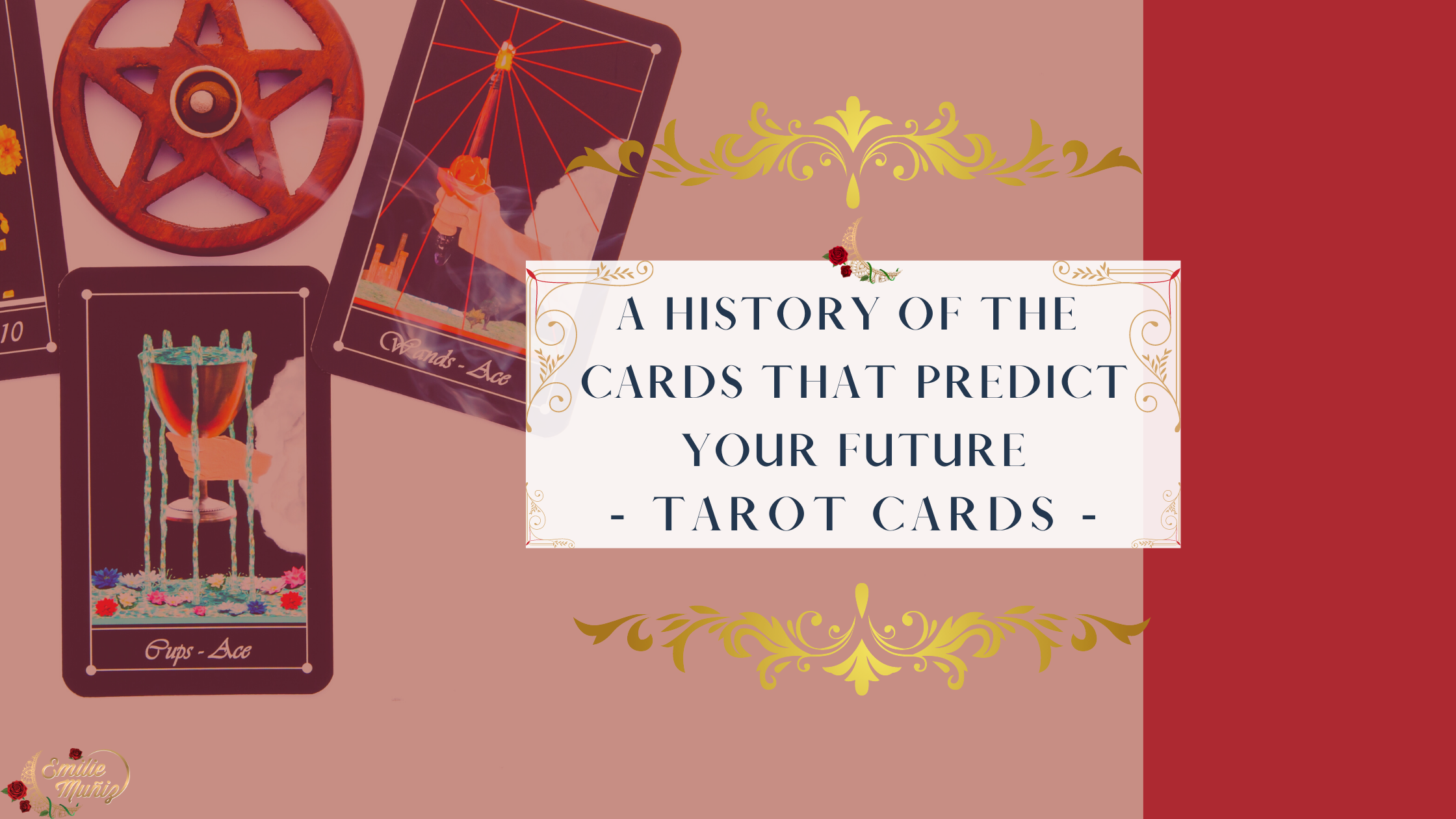Tarot cards have engaged people’s creativity and ingenuity for centenaries. Embraced by new age practitioners, these cards have also drawn in spiritualists. In-depth evaluations of the sources and significance of tarot cards, however, tend to emphasize just how long in the tooth they are and what their primary objectives may have been.
From Playing Cards To Divination
While this may surprise people who associate tarot cards with readings, occult, and divination, the original motive of the tarot cards in both France and Italy, was to be used as a tool for a parlor game, and not as reflective reading. In the fifteenth century, the tarot cards were used in various parts of Europe to play games such as Italian tarocchini, French tarot, and Austrian Königrufen. The players then began writing verses on the cards around the thematic comparisons of the cards.
It is found that the link between the prediction and the playing cards originated in the late sixteenth and early seventeenth centuries. At that time, the cards were used in a considerably simpler form compared to how they are used now. In the eighteenth century, people started to designate specific meanings to each card, and even grant recommendations as to how one can display and place the deck for specific readings.
Tarot And Kabbalah
The origin of the Tarot can be traced back to the Holy Kabbalah. There is the debate about when and how these two long transcendental pieces united. However, it is clear that by the nineteenth century, the two modalities were playing in action.
It originated in 1856 when Alphonse Louis Constant, also recognized as Eliphas Levi, published the first book to correlate the 22 cards of the Major Arcana with the 22 letters of the Hebrew alphabet, and the four suits of the Minor Arcana with the Tetragrammaton – the four-letter name of God. Later, Gerard Encausse, a student of Levi recognized as Papus, followed his master’s footsteps and wrote – The Tarot of the Bohemians, that states that the Tarot was generated by the Tetragrammaton. Another Levi’s student, Paul Christian, designed a system that connected the Tarot with Kabbalistic astrology. In that same year, Oswald Wirth printed a deck of Major Arcana, consolidating the 22 designs and Hebrew letters.
A closer look at the aces of the Tarot shows that in every case there exists a similar image. There is a large, oversized hand extending from the azure, from the heavens into a cloud, gleaming in an aura of white light – a halo, representing the hand of God, offering a gift. Since Kabbalah means “receiving,” this makes absolute sense as we are receiving what we need that comes to us from the universe, who is the giver. In Judaism, God is unknown, undefined, and unnamed, just like our journey in tarot.
Tarot In France And Italy
Antoine Court de Gebelin, a french writer contended that tarot cards were formed based on a holy record inscribed by ancient Egyptian priests. The cards were then taken to Europe by gypsies. This certainly made tarot card readings more reliable. As time progressed, tarot cards were frequently compared with the occult and these contemporary French cards began to influence the English speaking nations.
Artists in Europe created elemental playing cards, the ancestors of what we know today as tarot cards, that were used as gaming cards, and highlighted four discrete suits. These suits are comparable to what we still use today – cups, swords, wands, and coins. After a decade or two of using these, Italian artists began painting additional cards, heavily embellished, to add to the contemporary suits.
These triumph cards were often designed for affluent families. Members of this society would commission artists to create personalized cards starring family members and companions, as a symbol of success.
As it wasn’t possible for everyone to monetarily invest in these personalized cards, these cards were only possessed by the elite group. After the discovery of printing machines, the cards were produced in bulks for games.
They are still used as gaming cards in sections of Europe even to this day and the mystical connections with these tarot cards have influenced and grabbed the attention of the population. As such, tarot cards today exist in both, the initial gaming form as well as its magical design.
 “Hi, I’m Emilie a New York City, native who started to dive into the world of tarot and spirituality over twenty years ago. And, I just love the Tarot. I love the tarot because it has helped me in so many ways. It has helped me navigate through the rubble that life sometimes throws our way, helped me connect with lost ones, helps me make the right decisions.
“Hi, I’m Emilie a New York City, native who started to dive into the world of tarot and spirituality over twenty years ago. And, I just love the Tarot. I love the tarot because it has helped me in so many ways. It has helped me navigate through the rubble that life sometimes throws our way, helped me connect with lost ones, helps me make the right decisions.
Following my deep love for the Tarot and reading as an expert over the years, I decided to turn my passion into my career. Now I am a full-time diviner (Tarot Readings )and help others through tarot just as it has helped me.
I also love teaching tarot. I am an Instructor of tarot (Learn Tarot )in which I teach my students how to become confident readers for themselves and others. On the side, I also am a tarot deck creator. I am the creator of Simplicity Tarot ( My Tarot deck )with several more decks in creation. I am a lover of everything in the forest, crystals, and of course roses.
If you are in need and looking for help I am here to help you every step of the way through tarot and divination without the fluffy fairy tales.
